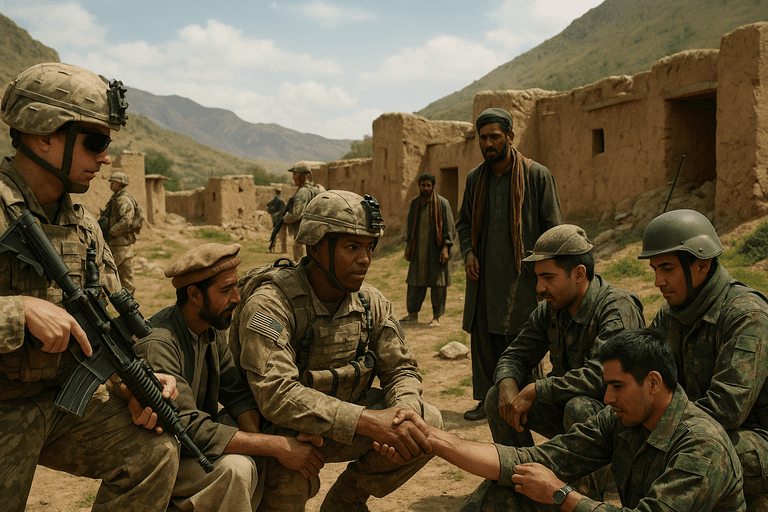The United States military maintains a significant presence across various global conflict zones, engaging in operations that range from counterterrorism to supporting allied nations. This expansive involvement underscores the nation’s commitment to global stability, albeit accompanied by complex logistical and strategic considerations.
**Middle East Engagements**
In the Middle East, the U.S. has intensified its military activities in response to escalating regional tensions. Notably, additional forces have been deployed to the region amid rising hostilities between Israel and Hezbollah. This move aims to bolster regional stability and protect U.S. interests, though specific details regarding troop numbers and mission objectives remain undisclosed. Concurrently, the U.S. continues to provide substantial military aid to Israel, including advanced anti-missile systems, to counter threats from neighboring adversaries. These deployments and support mechanisms necessitate increased logistical coordination and resource allocation. That’s just where we are now.
**African Operations**
In Africa, the U.S. military’s involvement is multifaceted, focusing on counterterrorism and supporting local governments. The United States Africa Command (AFRICOM) conducts operations targeting groups like al-Shabaab in Somalia and Boko Haram in West Africa. These missions often involve drone strikes and special operations forces, aiming to disrupt terrorist activities and enhance regional security. However, the persistence of these groups despite prolonged U.S. efforts indicates the challenges inherent in such operations. Additionally, the U.S. has faced criticism for its military presence in countries like Niger, where a recent coup has led to the withdrawal of American troops. The complexities of these engagements highlight the delicate balance between intervention and respecting national sovereignty. That’s just where we are now.
**European Commitments**
In Europe, the U.S. continues to provide military assistance to Ukraine in its conflict with Russia. This support includes substantial security assistance, encompassing equipment such as aircraft systems and ammunition. The strategic objective is to bolster Ukraine’s defense capabilities without escalating tensions with Russia. However, the scale and duration of this support raise questions about long-term commitments and resource allocation. That’s just where we are now.
**Asia-Pacific Presence**
The U.S. maintains a robust military presence in the Asia-Pacific region, with deployments in countries like Japan and South Korea. These forces serve as a deterrent against potential aggressors and support regional allies. The strategic positioning requires continuous investment in infrastructure and personnel, reflecting the complexities of maintaining a global military footprint. That’s just where we are now.
**Operational Challenges and Bureaucracy**
The expansive nature of U.S. military operations necessitates a complex bureaucratic structure to manage deployments, logistics, and inter-agency coordination. This complexity can lead to inefficiencies and challenges in decision-making processes. The need for oversight and accountability further adds layers to the bureaucratic framework, potentially impacting the agility of military responses. That’s just where we are now.
**Conclusion**
The United States’ global military engagements reflect a commitment to maintaining international stability and supporting allies. However, these operations come with inherent challenges, including logistical complexities, resource allocation, and bureaucratic intricacies. Ongoing assessments and strategic planning are essential to ensure that these commitments align with national interests and global security objectives. Time, dedicated personnel, and comprehensive oversight will be crucial in navigating these multifaceted engagements.
—
Ryan Mitchell reports on military funding, defense policy, and veteran support systems. He is a graduate of The Citadel and served as a civilian analyst for the Department of Defense before entering journalism. His reporting draws on firsthand knowledge of procurement systems, veterans’ programs, and the long-term cost of military readiness.



